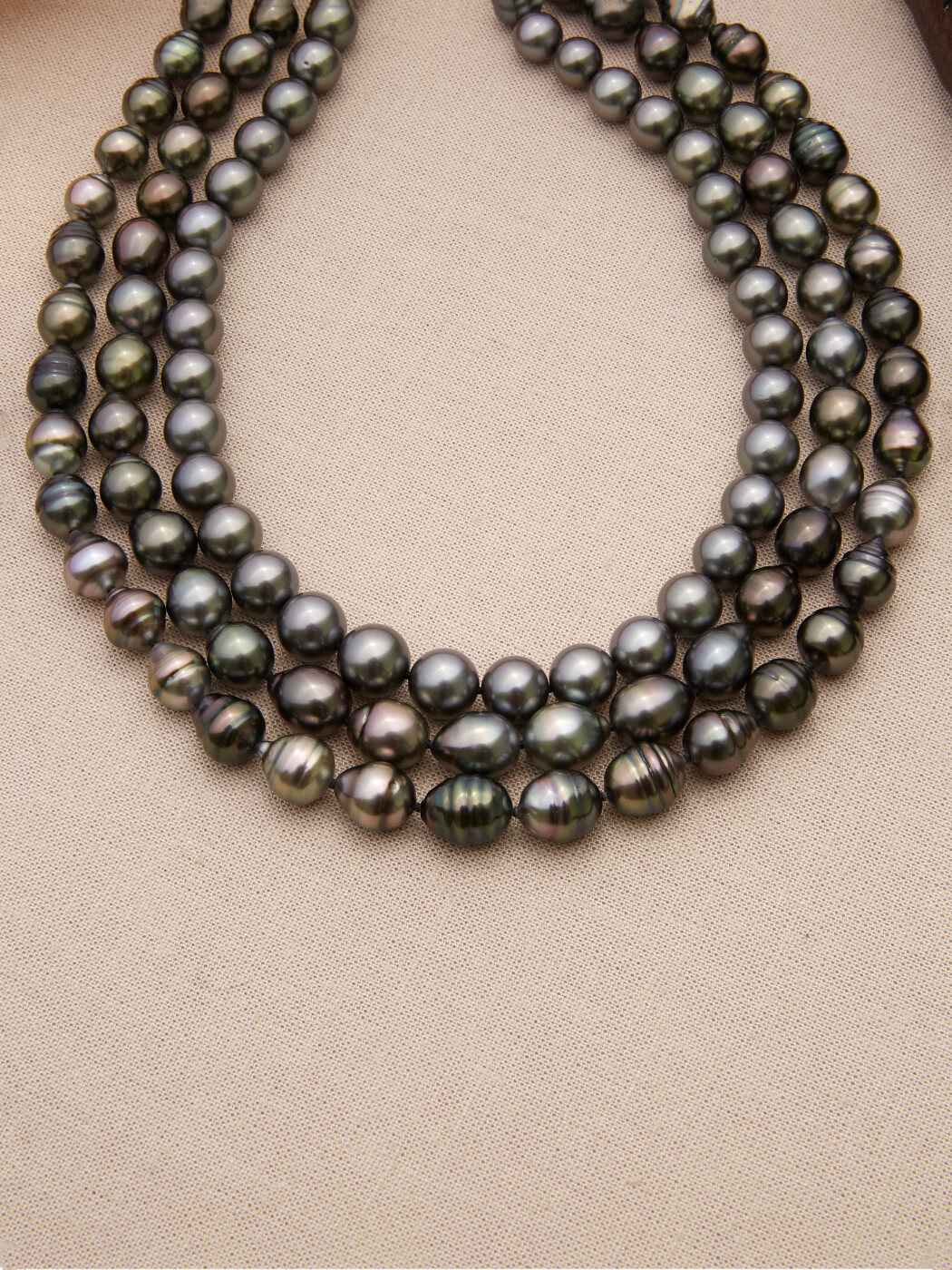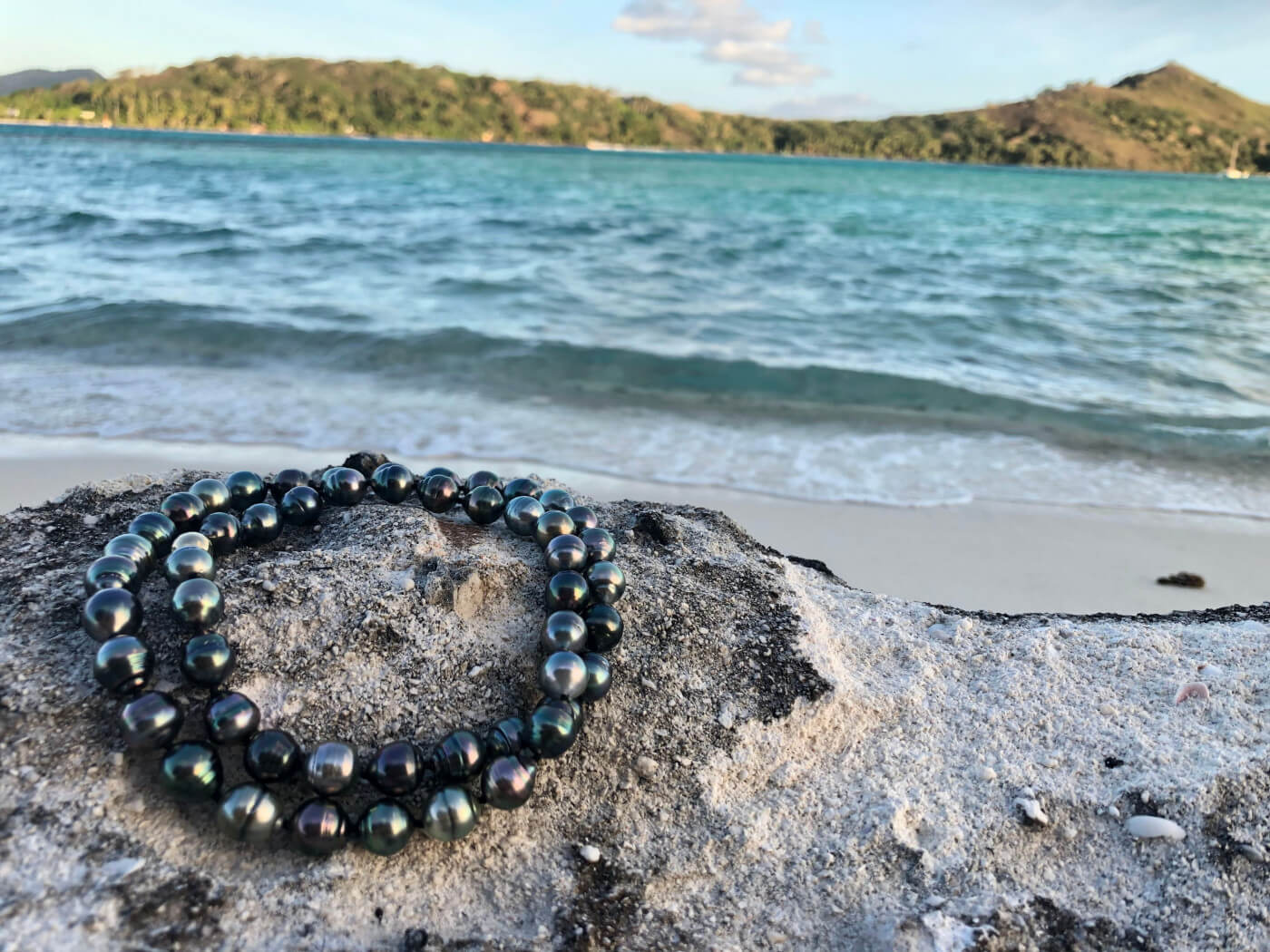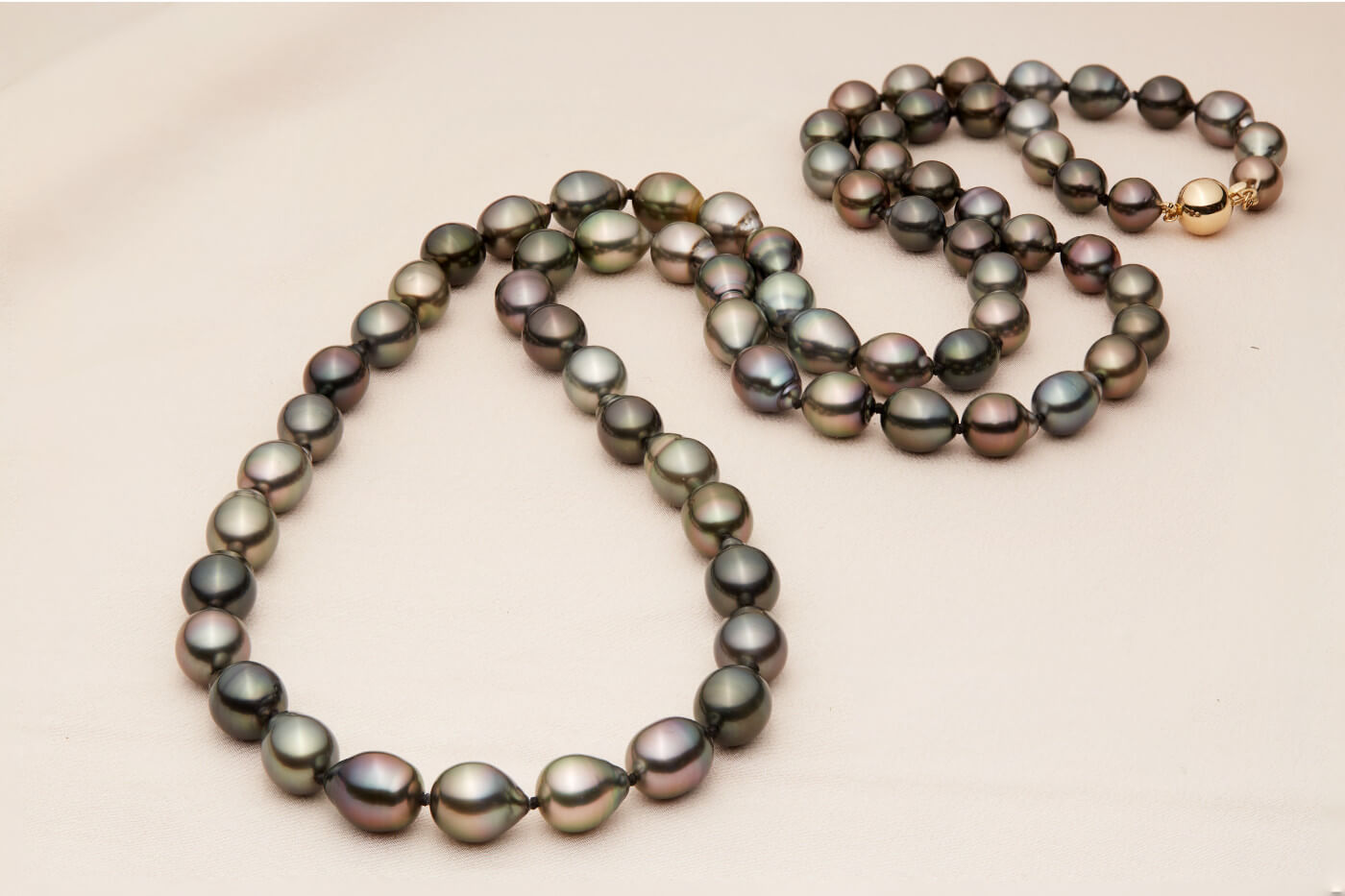Take a moment to learn about the rare and revered Tahitian pearl—we dare you!
What do a black-lipped oyster, a long saltwater bath and a million-year-old South Pacific volcano have in common? They all collaborate magically in the creation of the Tahitian pearl, one of the most exotic, coveted and statement-making of the world’s gemstones.
Known by many as black pearls, these stunning beauties come in a spectrum of colors ranging from white to charcoal to green, blue, eggplant and even peacock, but whatever color they may be, these are no shrinking violets. If Tahitian pearls were guests at a cocktail party, they’re the ones who make a grand entrance, who turn heads, who announce, “I’ve arrived.” As such, they’re not for everyone or every occasion, and that’s O.K. But sometimes a special event calls for a “secret weapon,” and the Tahitian black pearl always rises to the occasion. (There’s a reason wily Captain Jack Sparrow’s Pirates of the Caribbean sailing ship that gets into more adventures and escapades than any other is dubbed The Black Pearl.)

Tahitian pearls are grown exclusively in French Polynesia, a formation of 121 islands and atolls, the largest of which is Tahiti. Just as there are many kinds of sparkling wines but only those produced in France’s Champagne region can carry the esteemed varietal name, there are many varieties of pearls grown the world over, but only those that are produced in French Polynesia can be called Tahitian.

And that’s where that volcano comes into play. The region’s land masses were formed roughly 800,000 to 1.4 million years ago through volcanic eruption, and the resulting islands and atolls comprise a unique archipelago that encourages the safe and natural growth of Pinctada margaritifera. Never mind if that tongue-twister’s tough to pronounce, what’s important to know is that the black-lipped oyster, or black lip as it’s more commonly called, produces a natural wonder that’s beautiful to behold. Just how wonderful? Consider this:
-
Individual pearls derive their luminous hues from the “lip” of the mollusk's shell that can occur in a rainbow of colors—some 250 of them!
-
Whereas some mollusk species can produce dozens of pearls, Pinctada margaritifera produces only a single pearl, adding to the gem’s rarity and value.
-
Black-lipped oysters are large and can grow to as much as 10 pounds in size and as such, they can produce exceptionally large pearls.
-
There are seven categories of pearls shapes they produce including: round, semi-round, button, drop, oval, semi-baroque and baroque. Many non-round shapes exhibit colorful symmetrical rings that occur as the pearl spins during growth. These are commonly referred to as circles.
-
It takes on average 43 pearls to make up a 9-10 mm strand and it can take hundreds of pearls to find a single suitable match. So thousands of Tahitian pearls must be graded, selected and, frankly, rejected to find those 43 matches.
And what about that luxuriously long saltwater bath we mentioned above? It takes at least a year and a half—and the longer the better—for the oyster to form a properly thick nacre, the outer surface that gives the pearl its shine, color, luminescence … its, well, pearlness. Reputable farmers know this period of submersion can’t be rushed or shortened, lest the nacre is too thin and susceptible to wearing off over time. It’s a time-consuming, labor-intensive craft, and Pearl Paradise works with only the region’s highest quality pearl-farming families from which we procure the world’s finest Tahitian pearls. We buy direct from the farmers and do our own grading, matching, drilling and hand-tying. That’s why you can find a Pearl Paradise strand for $2,000 for which you’d pay $10,000 in a jewelry store.

So now that you know a bit about the incredible work of natural art known as the Tahitian black pearl, perhaps you’re ready to own and wear them. Sure, at first glance, they may seem “edgy,” “daring” or “non-traditional,” but isn’t that exactly what you’re after when you put on a black designer dress or bespoke suit? You owe it to yourself to at least try on some Tahitians and see how you look—and feel.
We dare you!









